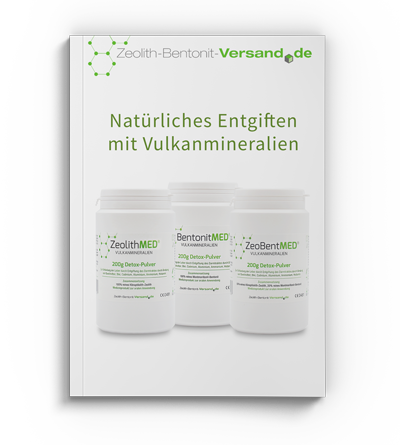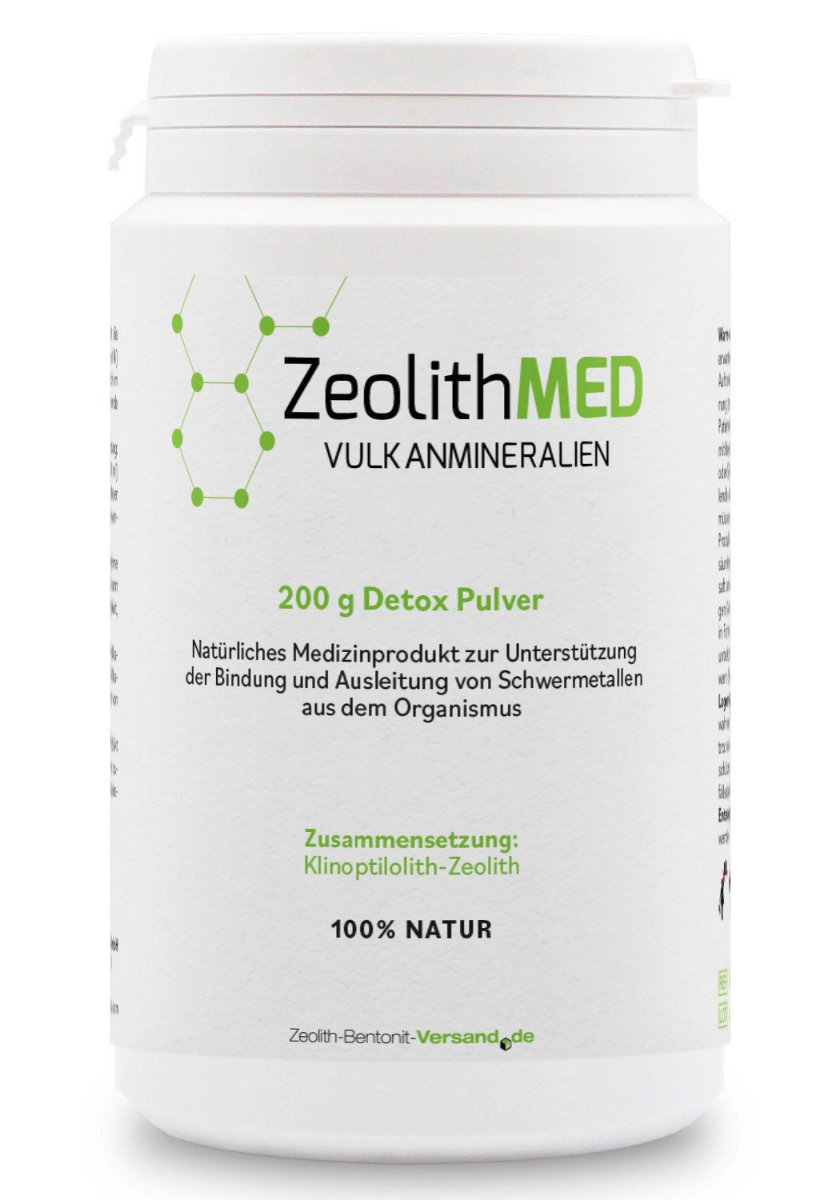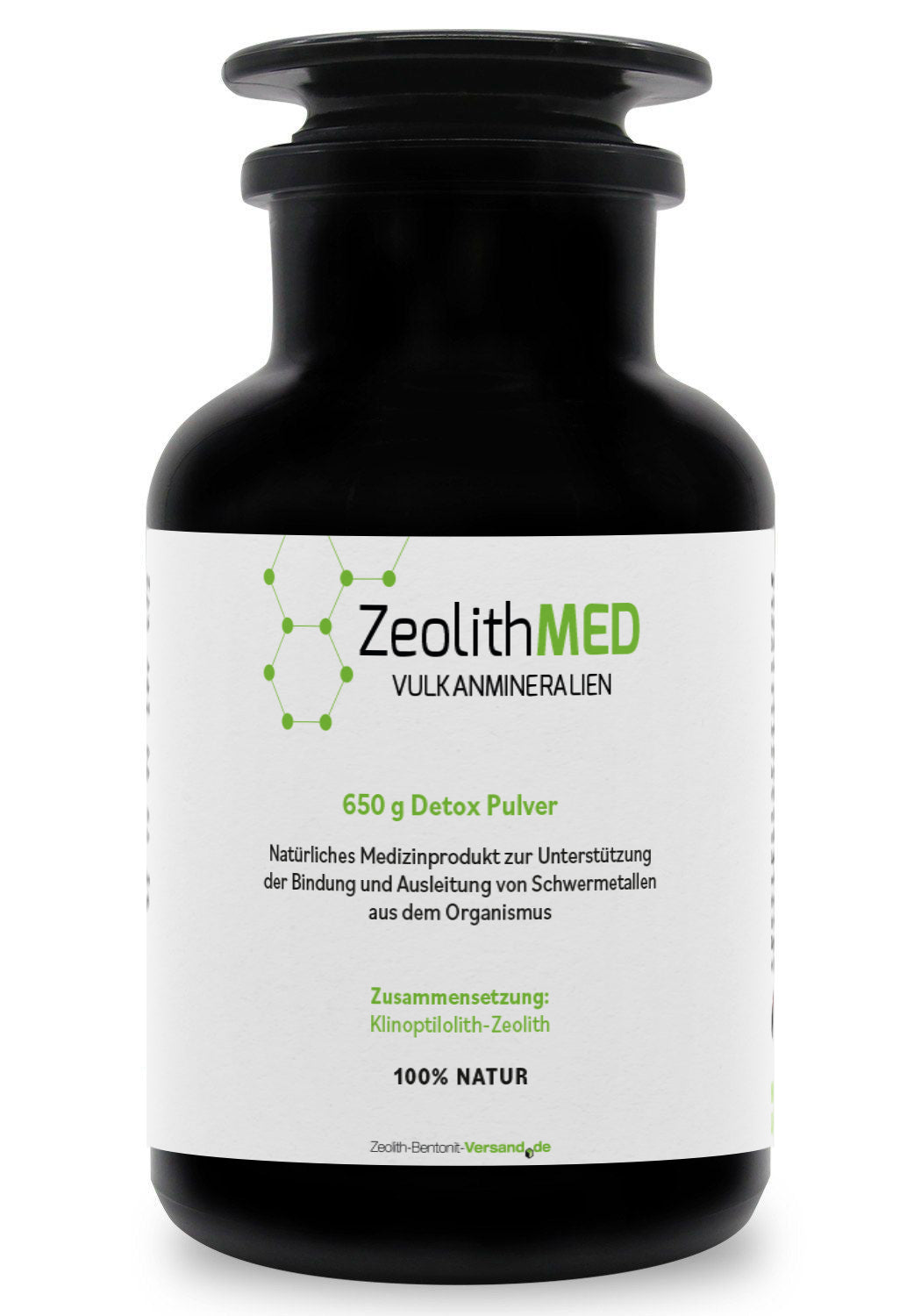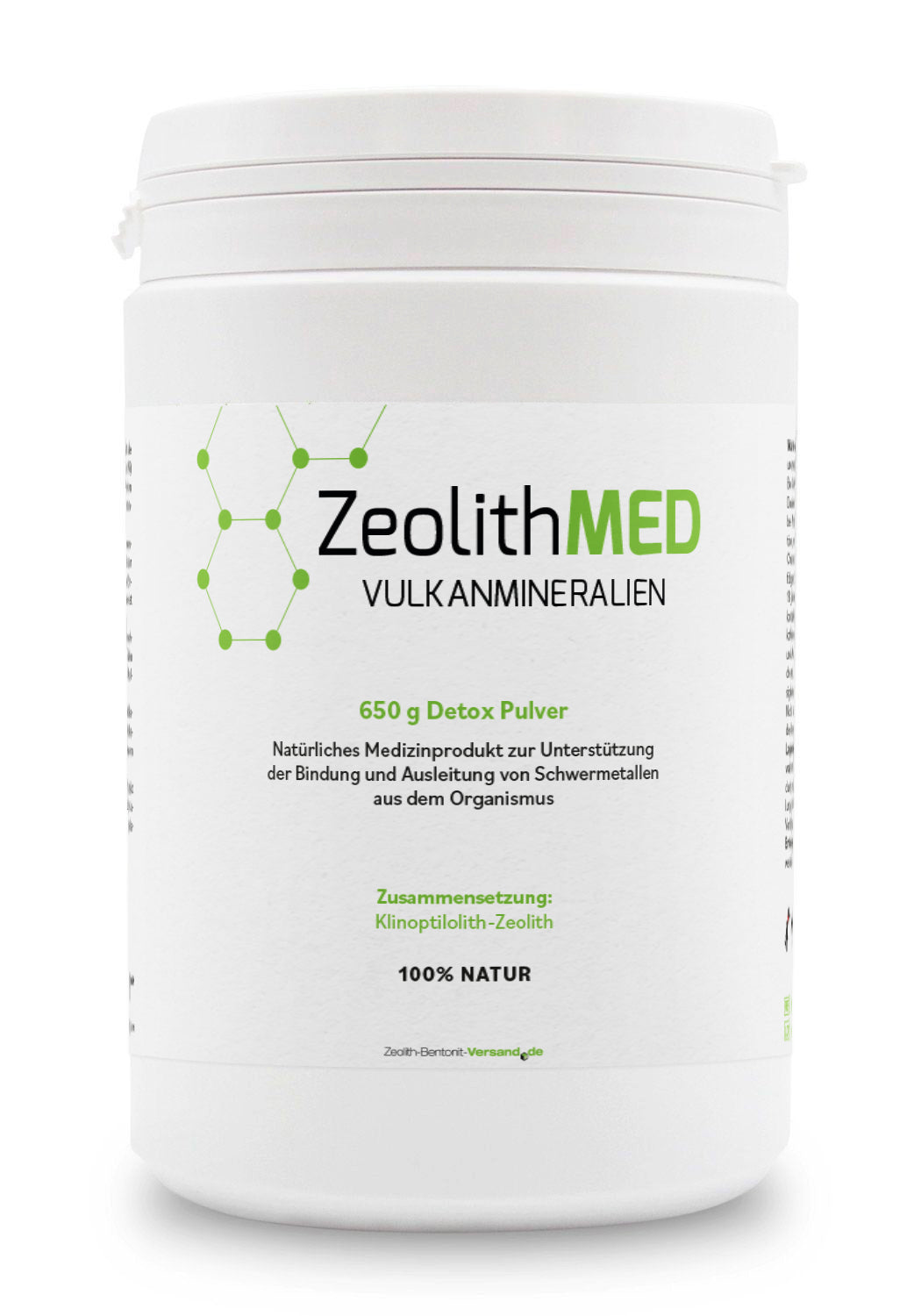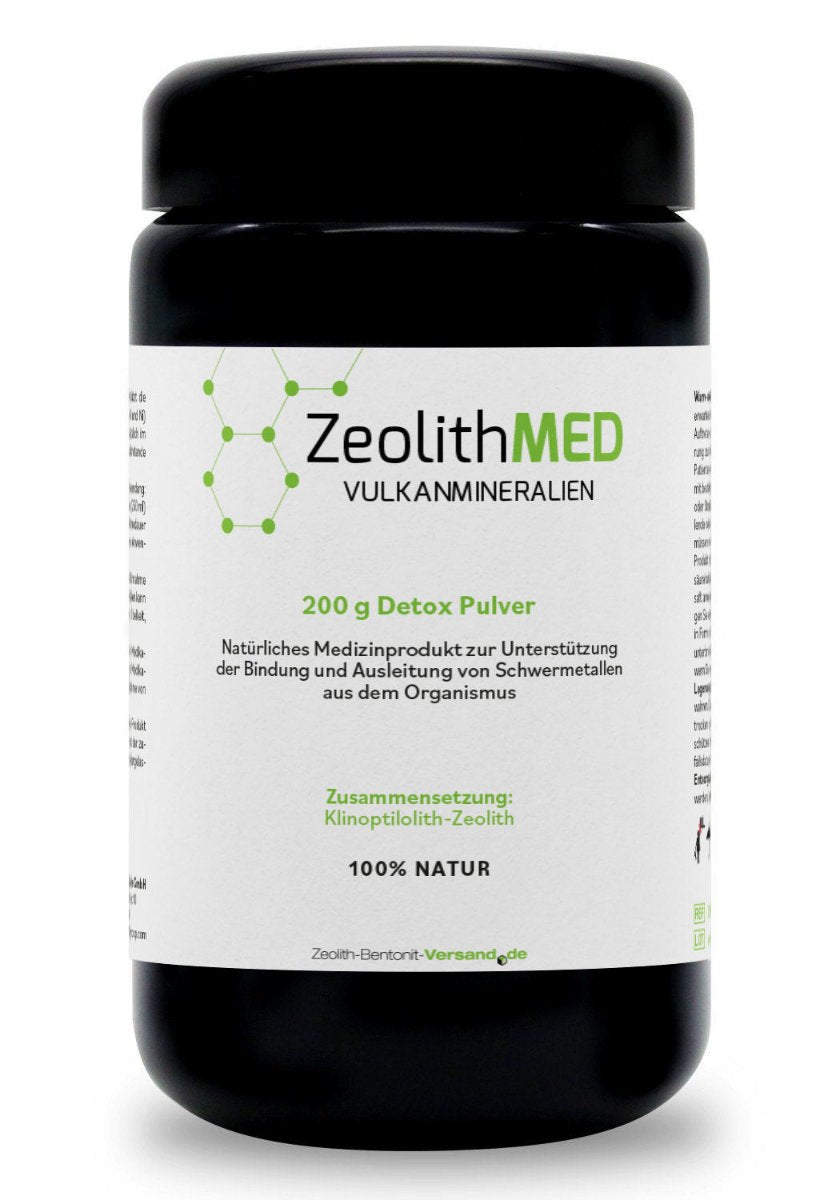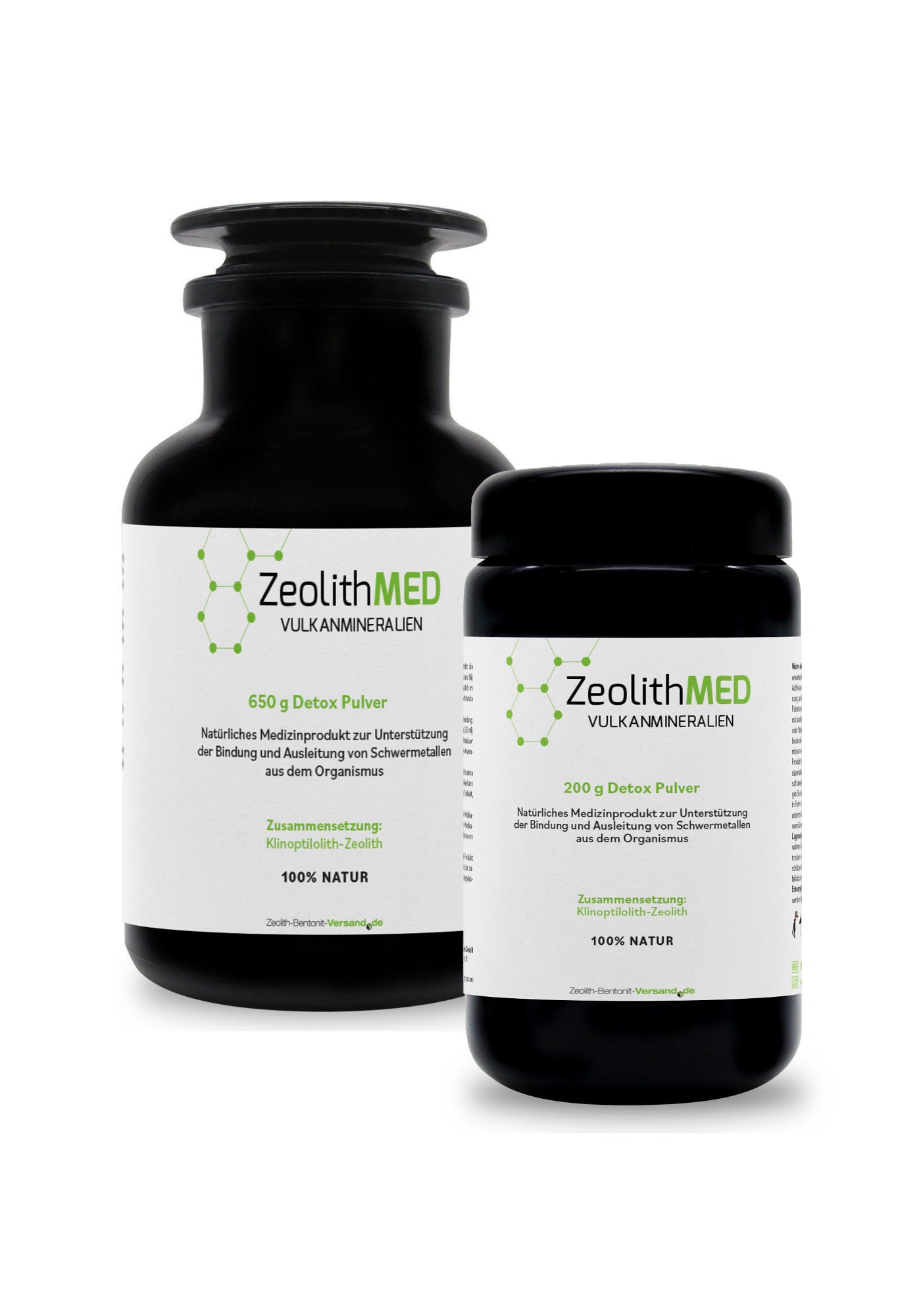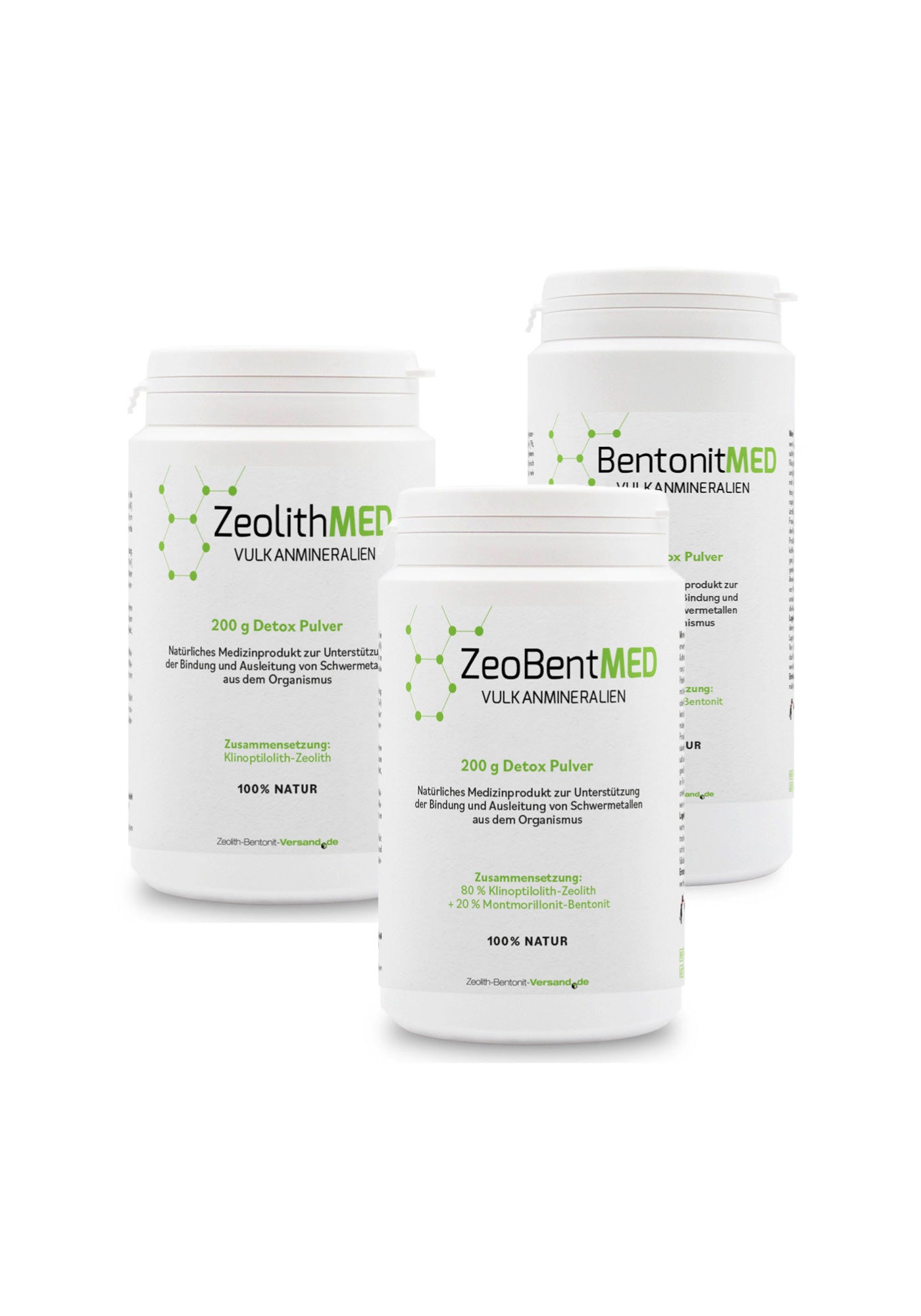



ZeolithMED detox powder 400g, medical device with CE certificate
ab 2 zu je 24,41€ und Sie sparen 2%
ab 4 zu je 23,66€ und Sie sparen 5%
ab 6 zu je 22,91€ und Sie sparen 8%
Detoxify with medical grade zeolite POWDER
Zeolite clinoptilolite is a microporous silicate mineral of volcanic origin that was formed millions of years ago under pressure and is used in powder form for oral use in humans. The porosity of the mineral and the fine grinding create a particularly large surface area that is able to selectively bind certain pollutants and lead them out of the body through ion exchange and adsorption. Our independently tested, CE-certified ZeolithMED Detox Powder is made from 100% natural mechanically activated clinoptiolite approved for long-term internal use.
The analyses carried out by independent laboratories confirmed the purity and efficacy of this product. ZeolithMED Detox Powder is used for:
- Binding of heavy metals toxic to humans, such as: lead, mercury, cadmium and aluminum
- Removal of harmful substances from the body in a natural way
- Relief of the organism by Detoxification
- Reduction of symptoms of heavy metal exposure
The effect of zeolite powder depends largely on the correct particle size distribution. The mechanical activation of the powder is achieved by its micronization. The natural powder particles are ground to a certain size. The average particle size (grain size) of Zeolite MED powder is approximately 35 μm (microns). ZeolithMED powder does not contain nanoparticles.
Zeolite Powder Application & Dosage
The zeolite powder contained in ZeolithMED can be easily mixed in water. The taste is dusty to earthy. All that is required for the application is a glass of water (250 milliliters) and a teaspoon. Please follow the instructions on the instructions for use, which can be found directly on the label.
A possible side effect of taking zeolite clinoptilolite is constipation. This can be quickly regulated by drinking more water and adjusting the dosage.
Answers to frequently asked questions about detoxification with zeolite, bentonite and ZeoBent can be found in our FAQs. Information on payment options can be found here. Orders received by 2:00 p.m. will be shipped Monday to Friday on the same day.
Buy zeolite as powder, ultrafine powder, capsule or body care?
- Product information
- ZeolithMED
- ZeolithMED Hautcreme für trockene Haut
- ZeolithMED Zahncreme
- Instructions for use
- ZeolithMED
Zeolite powder - important information about effect and application
Zeolite is a complex mineral that forms when volcanic lava and water come into contact. This process can take thousands or even millions of years. Scientists estimate that the first zeolite minerals formed over 300 million years ago. "Zeolite" is a common name for over 240 unique structures (or scaffolds), more than 40 of which are found in nature. The most common types of zeolite include [1]:
- clinoptilolite
- mordenite
- Analzime
- Chabasite
- Natrolite
- Stilbite
The ancient Romans used zeolite to build bridges. Then it fell into oblivion and found its way back in 1756, when the Swedish mineralogist Axel Cronstedt first described and named it. He merged two Greek words: zéō, which means "to cook", and líthos, which means "stone". Zeolite released a lot of steam when heated, reminding Cronstedt of a "boiling stone" [2].
The benefits of zeolite powder include:
- Relief of the body through detoxification
- Protection of the liver, as well as other organs from harmful substances such as lead, mercury, cadmium, and aluminum.
- The powder has an immediate effect on the upper digestive tract compared to capsules.
- The powder can also be easily used for external applications.
- The powder facilitates internal use for people with swallowing problems – e.g., for the elderly.
Structure
In a collision of glowing lava and cold sea water, zeolite forms a unique cage-like structure and a negative surface charge. Aluminum and silicon form the basis of this structure, but it often contains other elements such as oxygen, tin, zinc, and titanium. Tiny "cages" allow zeolite to act as a "molecular sieve" that filters molecules based on their particle size. Negative surface charge loosely binds minerals – such as sodium, potassium, and calcium – and replaces them with large ions and heavy metals [3]. In other words, zeolite can absorb many toxins without depriving the body of valuable trace elements.
Traditional and medicinal uses
Traditional medicine recognizes "eating clay" (geophagy) as a natural detoxification method. Zeolite has similar properties and traditional uses [4]. In modern medicine, doctors and researchers use zeolite for [4, 5, 3, 6]:
- Separation and detection of biomarkers.
- Controlled drug delivery.
- Imaging techniques such as NMR (nuclear magnetic resonance).
- Skin and bone tissue engineering.
- Heavy metal detoxification.
References
[1] https://www.ncbi.nlm.nih.gov/pmc/articles/PMC34179/ [2] https://www.ncbi.nlm.nih.gov/pmc/articles/PMC5327878/ [3] https://www.ncbi.nlm.nih.gov/pmc/articles/PMC6277462/ [4] https://www.ncbi.nlm.nih.gov/pubmed/11291273 [5] https://www.ncbi.nlm.nih.gov/pubmed/29630078 [6] https://www.ncbi.nlm.nih.gov/pubmed/23883900
